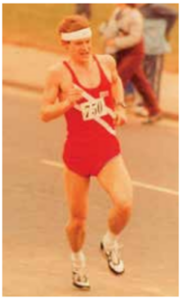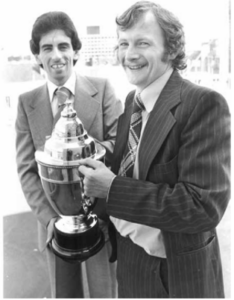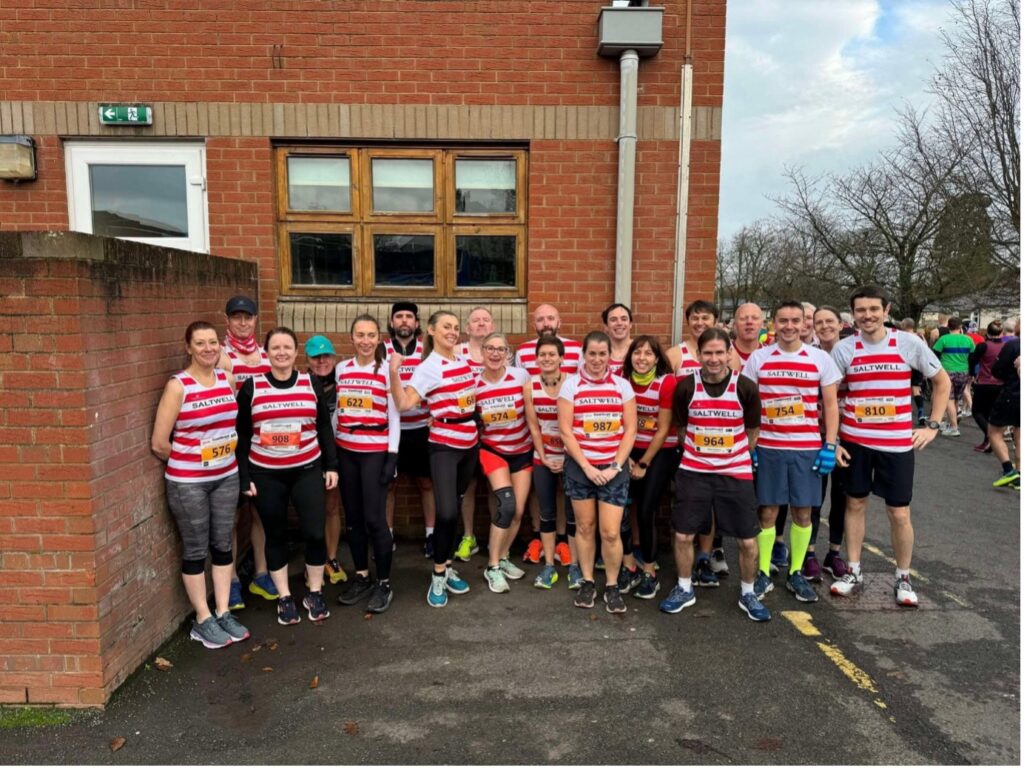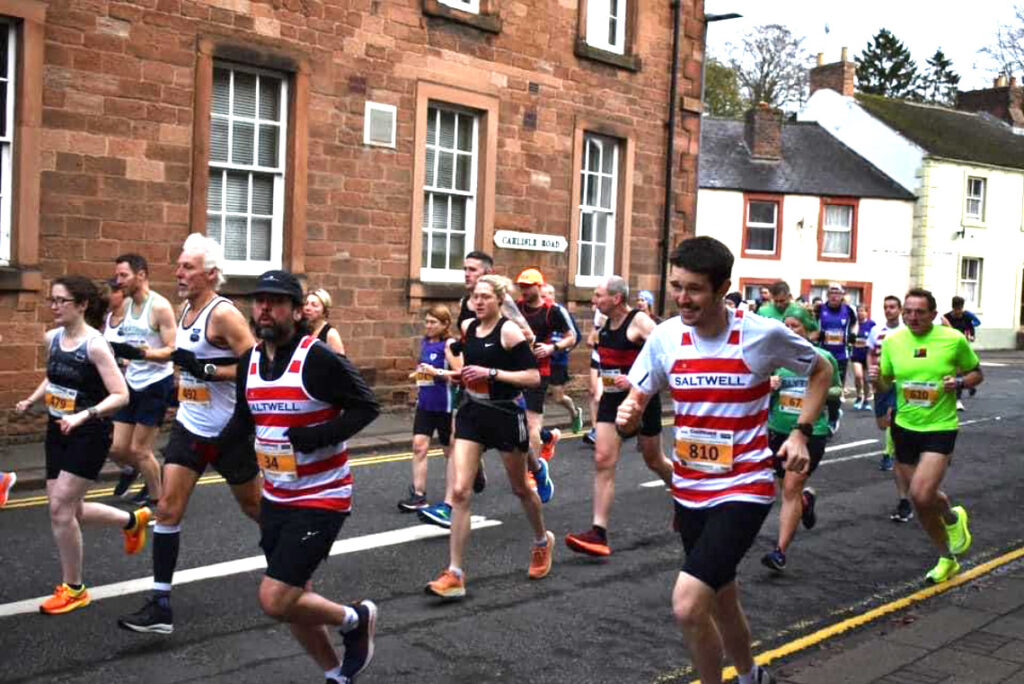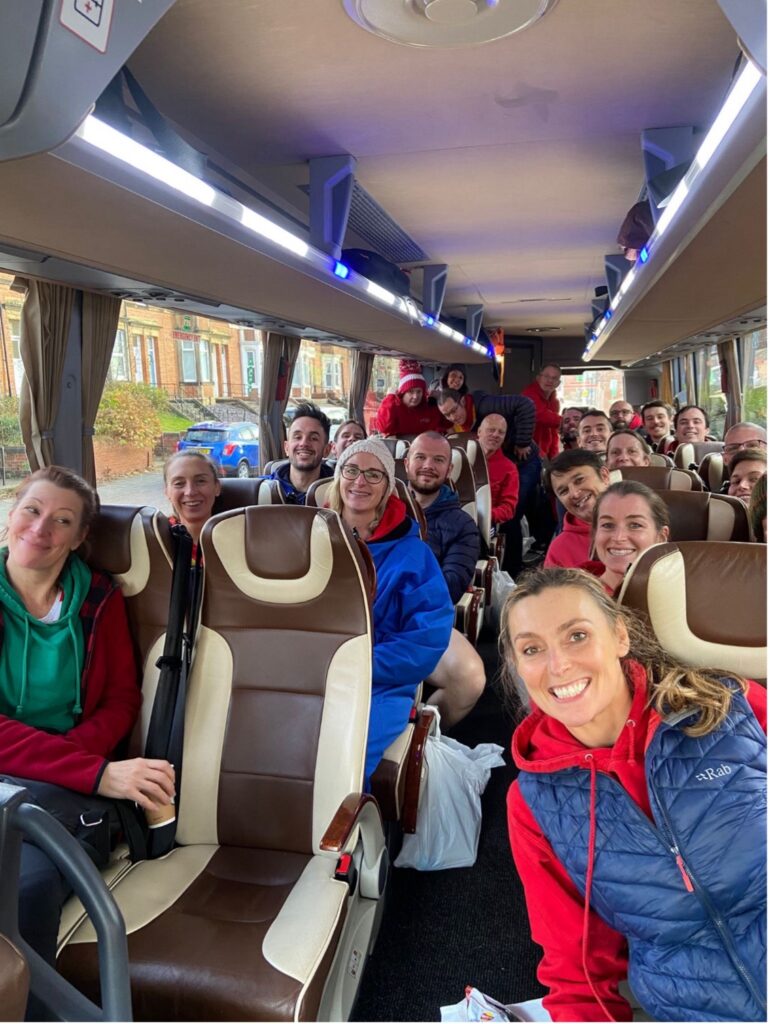The famous Brampton to Carlisle 10-mile… It’s officially the oldest 10-mile road race in the UK and the Border Harriers Athletics Club website proudly boasts this fact. I had been eyeing up this one ever since joining the oldest running club in Gateshead at the start of the year. You see, it’s not just the pounding of tarmac, trails and muddy fields that gets me excited about running. It’s being a part of the tradition and history of a club and following in the footsteps of legends of the sport that have also run the same famous races.
When moving to the North East just over a year ago, I decided I wanted to get back into running after a few years of letting it lapse. The covid pandemic being a good excuse to put on a few pounds. But put simply I had lost the enjoyment and the bug for running. The North East has a proud tradition of producing some of the country’s best runners, and the number of clubs to choose from was a bit overwhelming. What appealed about becoming a Saltwell Harrier was reading the website and the obvious pride the club took in its history. I found myself emersed in the brilliantly put together 125 year anniversary book produced by club historian Walter Fraser.
I like to use a bit of history to get myself pumped up for taking part in or watching sport. I like to use an analogy with football clubs and their proud history. It’s hard to put into words the importance of it, but it’s something no big money investor in the game can buy, that connection between the generations of fans that have followed the clubs. No money buys Preston North End’s invincible season in 1889, or Huddersfield Town’s back-to-back league titles from 1924 to 1927 (well, until Man City went one better last season). Brian Clough’s European Cup heroics with Nottingham Forest; Jimmy Glass’s last minute great escape antics with Carlisle United in ‘99; Hereford United’s giant killing of Newcastle in 1972; and being fair to both Tyne & Wear clubs here, little old Millwall beating Sunderland to reach the FA Cup final in 2004… What makes those football clubs is that proud history. I think on a slightly smaller scale the same goes for running clubs and race events, and particularly so in the North East.
When researching clubs to join, the Saltwell website hosted an archive of blog posts from members, proudly telling their tales of road / trail / cross country, fell and mountain races conquered. This was clearly a club, proud of its history and deep-rooted place within the community and one that encouraged all its members to get involved and to push themselves to try new challenges. That’s exactly what I needed from a club, and here I am now, a few months later writing my own little piece of history for the club’s website…
Since joining in February, I’ve run for the hoops in quite few local 10k races, relay events, one cross country to date, and even a fell race, something I couldn’t imagine completing this time last year. My fitness has improved no end, but more importantly, I’m enjoying running again and all the benefits both mentally and physically that come with pounding the streets (and hills) with group 3 on a Tuesday night.
Back to the Brampton to Carlisle event and there’s something really alluring about a traditional 10mile race. None of this soft metric 10k lark! 10 imperial miles has always been the ultimate test of speed mixed with endurance. Delving back into the web archives, you go back to the 1970s to see evidence that it was once the most popular distance for road races.
The Brampton to Carlisle is evidence of this, with the 1970s producing the quickest times and the race is steeped in history and famous names. Ron Hill (Bolton United Harriers) led the field home in a brisk 46min 40sec in 1974, while the following year Nick Sloane (Blackpool & Fylde) took the course record from Hill in a blistering 45:50, a record that still stands today! Steve Cram (Jarrow & Hebburn) was way off that sort of pace when he won it in 1984 in a relatively sedate 50:43 and again in 1987 in 49:51. UK 10,000m champion Carl Thackery established one of the fastest marks toward the end of the 20th century in 1991, recording 46:29. On the women’s side, Hayley Haining of Kilbarchan AAC is the only woman to win the event three times in 2004, 2005 and 2007. The female record is held by Angie Pain, bronze medallist at the 1990 Commonwealth marathon, with a mark of 51:51 set in 1989.
Referring back to the Saltwell archives and we have our own famous winner of the race, Billy Cain winning it for the hoops in a very respectable 47:10 in 1982. Incredibly that’s not even a course record for a Saltwell Harrier. David Kelly was one second faster (47:09) a few years earlier in 1977, unfortunately that wasn’t enough to win it that year, finishing in 2nd place and 30 seconds behind John Calvert (Blackburn Harriers).
Saltwell’s Billy Cain in GNR 1984 & David Kelly winning Rotherham Marathon in 1978 (from the Water Fraser history book)
Even though I’ll come nowhere near those sorts of records, I don’t think there’s many other sports where athletes of all abilities can enter the same competition as the elite level athletes. When I’m racing towards Carlisle down the A689 in the famous red and white hoops, I’m following that very same route of those big names, all be it a fair bit slower, but my name goes down on the same lists of finishers from 1952 to 2024!
So now you know what gets me out of bed on a freezing cold November morning, and here I am waiting outside the Gateshead Leisure Centre at 7.30 for the team bus to Brampton. I managed some porridge and a peanut butter bagel for breakfast and I’m hoping that’s enough to push me over the line in my first 10mile race since my pre-covid pandemic peak of 2018. I managed one 10-mile solo run on the Monday morning in the week leading up to this, followed by a Quayside Hill (and lots of steps) session on the Tuesday evening. I opted to rest the limbs after that which didn’t feel too bad. I’ve also discovered the joys of necking shots of beetroot juice in the mornings to try and give me an extra edge (it helps oxygen get to your muscles quicker apparently). Unfortunately, I may have over indulged in the purple stuff which led to some minor stomach issues the night before the race (I won’t go into anymore detail than that) which disrupted my sleep. So not ideal prep, but I was buzzing to take part and once onboard the team bus the background murmur of other hoops discussing their previous encounters and love for the race only added to the anticipation.
When we disembarked the bus at the William Howard School by the start line in Brampton, I soon realised what a big pull this event was for clubs all over the North of England, and from Scotland too. Calderglen, Dumfries, Dumbarton, Fife, Garscube, Cambuslang, Kilmarnock… all well represented. In fact, Dumfries had two distinct clubs in attendance, the Dumfries Running Club (claret & white colours) and the Dumfries Harriers who sport identical red and white hoops to our own. Maybe this was like Juventus adopting the colours of Notts County, and we need to organise a race event with our Scottish sister club?
Hoops Team Photo
The numbers gathering at the start continued to swell, bus after bus of club runners being dropped off and battling to find space in the school for changing and last-minute toilet breaks. No sooner were we all herded out onto the road, the race had started, without me hearing any official starting gun. I was later informed back on the team bus that it was indeed a duck quacking that got us underway, but no one actually confirmed they saw this mythical Brampton duck mascot. I can’t find any photo evidence of it online either!
I set out to try and keep a steady pace aiming for a finish time below 1hr25min as a good measure of progress in taking on greater distances. The congestion at the start stretches out quite quickly as you descend a very steep first 200m down to the Carlisle Road. It’s hard not get carried away, and I was probably guilty of going off too quickly (again!) in the first 3 miles out along the A689 and down the quiet country lanes into the village of Newby East. It’s nice and peaceful along this section, only disturbed by the occasional warning screams of “CAR!” from runners behind. My rhythm was slightly put off by a fan club for one runner, all standing with placards at the side of the road and singing to the tune of KC & The Sunshine Bands ‘Give it up’…
“Na-na, na-na, na-na, na-na-na na now, Andy Andy Graham, Andy Graham, Andy Andy Graham…”
I don’t know who you are Andy, but I couldn’t get your song out my head and it makes for a quick running pace when you sync your legs to it, which I was obviously trying to avoid this early in the race.
Full steam ahead at the start
At the 5mile mark I afforded myself my only glance at the casio watch to gauge how I was doing pace wise. I don’t do Strava or any other apps, running is more of a form of meditation and escape from technology for me. 39:12 the Casio read, so if I could keep that up I was well ahead of my target and could even start dreaming of a sub 1hr20. Once I got back up to the A689 past the village of Crosby-on-Eden, at around the 6mile mark, is when my legs started to feel tired, and my pace dropped off. By the time I got to the bridge over the M6 for the 1-mile climb into Carlisle, I was hanging on a bit. My calf’s started to burn, but I tucked inside behind one of the Dumfries Hoops, head down and not daring to look up at the long hill ahead. This is where I hoped the beetroot juice would kick in and work its magic… it didn’t!
The road started to level out a bit for the last mile and I pushed on to the Eden Bridge finish line with one last sprint for the final 200m. I was so pleased to finish and to have kept running the full distance, despite voices in my head telling me to take a rest or throw myself in the ditch during the last 3-miles! I was even more chuffed when I looked at the casio for only the second time and to see I’d clocked 1:22:50. The time was well within my target and a great marker for improvement at next years race.
Ten miles is a serious distance, it felt much more of a mental challenge to keep pushing myself through some pain barriers towards the end. You can see why it was such a popular race distance back in the day, the buzz I got after completing it is on another level to a 10k. I certainly need to take note of the aches and pains and get myself fitter before taking on half marathons and the goal of completing the Edinburgh Marathon in May next year.
Happy team bus on the way home
Back on the team bus, and it was pats on the back all round and scrolling through phones to confirm finish times. Carl Avery of Morpeth Harriers took first place in 48:42 and whilst everyone was clearly impressed, I was quick to point out this was nearly a whole 3-minutes behind the course record set in 1975. I’ve become a bit of an anorak on the Brampton to Carlisle race now, and I was boring those around me with historical stats all the way back to the pub in Gateshead. The post-race pint(s) went down a treat as attention turned to the upcoming cross-country fixture in Prudhoe the following Saturday, and the usual discussion around spikes, length of spikes or no-spikes at all. There’s probably already a blog post on it somewhere, but that’s for another day.
For now I was revelling in completing the oldest 10mile road race in the UK, in the famous red and white hoops of Saltwell and making my own little mark on the history books.
Laurie Carrigan


